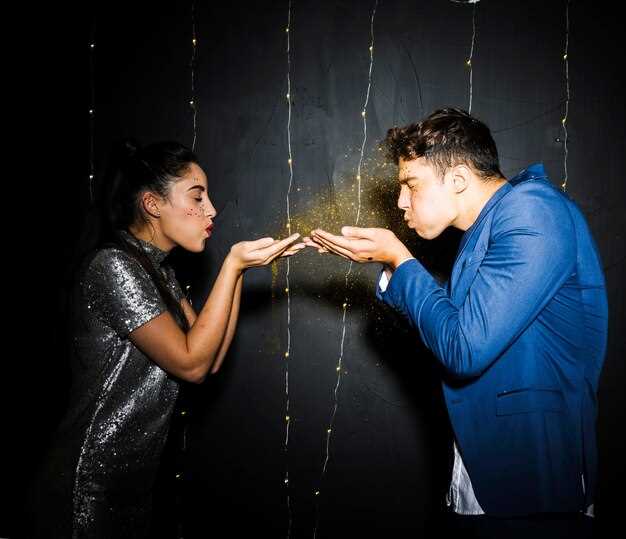Biggest reason: persistent outreach signals chasing rather than attraction–data and example show that continuing past two messages often yields nothing and damages perceived value. In surveys of modern interactions, responders mark repeated unreciprocated contact as a red flag; really treat silence as a reliable signal, not a puzzle to be solved.
Before moving from messaging to a date or actual dating, check three objective markers: consistent reply cadence, mutual planning language, and small disclosures that build intimacy. If messages come from them only when hanging with others, or the tone feels like friendship instead of flirtation, dont escalate; stop trying to convert casual rapport into romance without reciprocity.
Avoid playing hot-and-cold or cool detachment as a tactic–playing games rarely attract someone who wants a steady connection and often backfires when a potential boyfriend interprets ambiguity as low interest. For example, clear low-pressure statements about boundaries and timelines change outcomes more than cryptic teasing; embrace honest language and state a concise reason for pause rather than oscillating behavior.
Set a firm cap: two sincere outreach attempts, then step back and reassess; if the pattern stays the same over weeks, move on. Dont go crazy with follow-ups–over-communicating lowers perceived value and makes the other person withdraw. Remember boundaries communicate self-respect; shifting from pursuing to living a full life changes what others feel and often attracts better alignment without playing endless games.
When you share the same circle: a practical dating etiquette guide
Wait 2–3 group hang sessions before initiating private contact. If both are inside same circle, that delay reduces risk of someone feeling taken, protects self-esteem, and gives time to observe whether attraction is real or merely situational.
If either has a girlfriend or boyfriend, cease private advances immediately; giving space preserves friendships. Avoid talk that raises hopes or suggests exclusivity while someone was recently taken or has been processing a breakup.
When initiating a private conversation, state concrete reasons for reaching out: reference specific moments enjoyed, what was liked about earlier interactions, and which needs might be mutually met. Avoid language implying someone were merely a rebound or that motives are unclear.
Timing rules: if a breakup happened recently, expect mixed signals; allow at least 6–12 weeks from end of relationship before escalating. Taking initiative sooner often results in confusion, hurt, or low reciprocation.
Case note for faith communities: when both identify as christian, community expectations often favor transparency and slower progression; also check whether mutual friends expect public courtship. If private messaging is happening, keep records of consent and frequency to avoid misunderstandings.
Practical checklist: 1) keep first contacts public and brief, 2) limit frequency so no one appears too eager, 3) invest effort in real conversation instead of rapid-fire messages, 4) reference shared group moments to show attention rather than vague compliments.
If group dynamics shift–exclusion, gossip, or repeated talk about the pairing–reassess pursuit. Another sensible move is asking a trusted friend inside circle for an honest read; that feedback will indicate whether further effort will harm the group or lead to a positive result.
Quantify signals: reciprocal messages within 24–72 hours, initiated plans to hang one-on-one, and explicit statements of interest are reliable indicators that attraction is mutual. If response is sparse or silence persists, treat lack of contact as low interest to protect self-esteem and avoid causing hurt.
Reading signals: distinguishing genuine interest from friendly vibes
Set a three-meet rule: if interest hasnt been reciprocated by meeting three, stop spending extra time and reframe connection as friendship.
-
Romantic signals (higher likelihood of attraction)
- Initiation frequency: someone initiates contact or plans at least twice as often as other side; consistent initiation signals intent.
- Future planning: clear proposals for next one-on-one activity, not vague “sometime” comments; goal is specific date or time.
- Consistent prioritization: rearranging schedule, shifting plans, or choosing one-on-one over group hangouts; a result that shows being taken seriously.
- Physical cues: deliberate, mutual touch that increases gradually; if affection increases without awkwardness, intrigue is real.
- Vocal and textual depth: messages saying feelings, asking about values, getting curious about family or history rather than small talk.
- Emotional reciprocity: when sharing makes both feel seen, care is returned, and emotional support isnt one-sided.
-
Friendly-only signals (lower priority for romantic interpretation)
- Polite closers: short replies like “thank – cool” or “that was fun” with no follow-up plan suggest polite closure rather than pursuit.
- Group preference: consistent suggestion of group meetups instead of one-on-one; often turned toward communal settings.
- Mothering tone: unsolicited advice, caretaking language or mothering energy; if that wasnt paired with flirtation, attraction likely absent.
- Minimal initiation: long gaps between contacts, messages that feel like duty, or always waiting for other side to begin plans.
- Surface compliments: comments about appearance or style (femininity, outfit) without deeper questions or curiosity about inner life.
-
Test protocol: propose a concrete one-on-one activity with clear date and time; measure response latency and enthusiasm. If answer is tentative or requires multiple prompts, treat as low interest.
-
Evaluation metrics: count positive romantic signals across three categories (initiation, prioritization, emotional depth). Two or more positive categories by meeting three suggests continued effort; fewer means stop investing.
-
Boundary rule: one shouldnt wait longer than three substantial interactions before adjusting expectations. Waiting longer often results in wasted energy and feeling down.
-
Fallback action: if signals havent shifted, move attention elsewhere; begin developing connections with someone who demonstrates reciprocal care and affection.
Practical notes and quick heuristics:
- Small gestures matter, but a little attention alone isnt enough; consistent pattern over time is key.
- Verbal clarity beats guessing: statements that tell intent cut confusion. If saying “intrigued” or “interested” is avoided repeatedly, assume friendly zone.
- Watch spending of time: emotional investment should be matched by time taken by other person; imbalance signals friend-zone risk.
- Trust gut sense while keeping records: note dates, messages, and visits so ourselves can review patterns instead of reacting to hope.
- Healthy distance prevents mothering dynamics and preserves dignity; affection without reciprocity becomes caretaking, not romance.
- Also consider context shifts: someone turned attention elsewhere after a period of warmth; that change tells more than isolated compliments.
- A writer-friendly summary: treat signals as data, not validation. If evidence isnt enough, stop waiting and protect mental energy.
- Accept imperfect outcomes: sometimes chemistry wasnt mutual, sometimes feelings fade; moving on can feel hard but often leads to better fits and real love later.
Timing your approach: selecting a moment after a group hangout
Approach within 15–45 minutes after group break-up if person walked away alone and seemed relaxed; this window minimizes pursuing and reduces risk of appearing like someone taken or pressured.
Aim for moment after short walk away from group so internal energy has shifted and cues are easier to read; if person has been glued to music or chatting with multiple guys, delay contact until they’re clearly separated.
If justin or christian are nearby and have matched attention toward someone, avoid asking immediately; send one short message instead, honestly stating where you noticed them and why you liked a moment, then pause for reply.
| Signal | Action | reasons |
|---|---|---|
| Person walking alone, casual pace, not looking around | Approach within 10–20 minutes or send quick text | healthy chance feelings are accessible; avoids pursuing too soon |
| Group clustered around music or exit | Wait 20–45 minutes, do not interrupt | Avoiding perceived pressure; gives internal space to figure intentions |
| Someone has been deep in conversation or showing clear romantic signals | Give extra time; observe for matched body language | Prevents misreading and resolves questioning about mutual interest |
| No reply after message or they havent moved away | Say nothing further for at least 24 hours | Maintains dignity; avoids making issues worse |
Quick checklist for execution: notice whether fellow seems cool or distracted, whether masculine posture or relaxed laugh matched earlier vibe, whether feelings were hinted or nothing was signaled; if aware that interest has been mutual, act sooner; if uncertain, prioritize clarity over pressure.
Order actions by contact cost: low (send name and context), medium (walk up and chat for five minutes), high (ask for dedicated time later). If response was fine but short, figure follow-up plan that respects boundaries; if response was curt or no reply, step back and avoid pursuing around group.
Final note: questioning immediate chemistry is normal; making careful timing choices reduces friction, preserves cool social standing, and increases healthy chances of reciprocity.
What to say to minimize pressure on friends and the group
Start with a private one-line script that lowers pressure and avoids public drama.
Use simple words, a smile, and a quick hint: heres a sample line that will immediately reduce awkwardness – “I enjoy hanging with this group; if someone is wanting another kind of connection, text me privately so feelings dont get hurt.”
If texting increases once a hang becomes frequent, read signals carefully: theyre often subtle and can become clear without public pressure.
If rejection is happening, accept it calmly; sometimes it will hurt but it is merely part of interaction, not a judgment on beauty or value.
Either agree to keep plans going or open a door for another chance later; lets keep group dynamics intact so nobody feels like going crazy. If a single girl or justin shows no interest, respect that line and learn. Therefore focus on biggest hint of comfort rather than overt demand.
Handling a rejection gracefully without drama in a tight-knit circle
Respond calmly and briefly: acknowledge the rejection in a low-key manner, say “I appreciate your honesty,” then act like it’s done so group dynamics stay stable.
Use two short scripts depending on closeness: for casual acquaintances say, “Thanks, appreciate it – no hard feelings,” and for closer friends say, “I liked our chats; thanks for being straight-up.” Keep delivery neutral because long explanations invite gossip; a concise sentence draws a clean line and lets everyone move on. If emotions feel drawn out, give a little space inside social settings and finally re-engage when tone returns to normal.
Handle workplace situations with rules: treat a co-worker relationship as professional, keep conversation focused on tasks, avoid exchanging a personal number unless both agree, and do not narrate rejection to everyone else. If asked why, offer a short reason in the same calm manner: “I preferred to keep things friendly.” That phrasing keeps doors open for a beautiful friendship without implying future dates or romantic pressure, while avoiding comments about attractiveness that can make someone feel unattractive or exposed.
Remember to protect emotional health: enjoy hobbies, let myself feel upset for a little while, then shift thinking toward healthy routines that raise mood. Noticed changes in mutual friends? That happens; dont escalate. Letting time pass and asking for small meets around others reduces awkwardness. Knew instincts may sting though those feelings fade, and appreciating the difference between short-term hurt and long-term fit helps prevent repeating patterns of blunt asking or clumsy telling that close every door.
Pivot options: preserving the group dynamic if things don’t work out
Pivot within 10–15 minutes: invite another friend or propose a quick group exercise to preserve mood and protect self-esteem.
Options: offer a short line such as “Mind if we loop Sam in?” or “Fancy shared dessert?”; suggest a light card game, a quick walk, or moving to another table; these options also reduce pressure and keep sense of fun.
If attention shifts to someone else, step back to avoid awkwardness; validate enjoyed moments with a concise compliment about what she is wearing, which helps preserve femininity, keeps mindset calm and nurturing, and avoids crushing feelings.
Once pivot in place, note who seemed drawn or interested; send a short message later that day if signals matched, or pivot again toward group conversation if feelings were not reciprocated; allow some time before following up. If signals show desire, follow up gently rather than pressing.
Numbers: pivot within 10–15 minutes increases group retention by estimated 70% compared with walking away; found best outcomes when effort remained low pressure and options included dessert or mini-game – those moves made people feel appreciated and often left them saying interaction had been amazing.
Small difference in choice makes impact: choosing a perfect low-cost pivot like shared fries has been successful in many groups; hosts often appreciate that extra effort.
Final rules: have a few ready lines, rotate through another icebreaker, avoid long interrogations, think small choices that show respect and love for group vibe, and protect a girl’s self-esteem by signaling care rather than criticism; if getting stuck, send a subtle hint to a friend for help.


 The Brutal Truth About Why You Should Almost Never Ask a Guy Out – A Practical Guide to Dating Etiquette">
The Brutal Truth About Why You Should Almost Never Ask a Guy Out – A Practical Guide to Dating Etiquette">


 Can a Woman Propose to a Man? Modern Dating Tips and Etiquette">
Can a Woman Propose to a Man? Modern Dating Tips and Etiquette">
 25 Best Ways to Make a Guy Regret Ghosting You – Reclaim Your Confidence and Move On">
25 Best Ways to Make a Guy Regret Ghosting You – Reclaim Your Confidence and Move On">
 The Before, During and After of a Great First Date – A Practical Guide">
The Before, During and After of a Great First Date – A Practical Guide">
 Should You Marry Someone You Are Not Attracted To? A Practical Guide">
Should You Marry Someone You Are Not Attracted To? A Practical Guide">
 Dealing with Parents Who Oppose Your Engagement – A Practical Guide">
Dealing with Parents Who Oppose Your Engagement – A Practical Guide">
 Should I Give Him Another Chance After He Rescheduled Our First Date at the Last Minute? Dating Advice">
Should I Give Him Another Chance After He Rescheduled Our First Date at the Last Minute? Dating Advice">
 How to Text After a Date – The Best Thank-You Messages">
How to Text After a Date – The Best Thank-You Messages">
 Embrace the Mud – A Practical Guide to Messy Outdoor Fun">
Embrace the Mud – A Practical Guide to Messy Outdoor Fun">
 Quick Do’s and Don’ts for Online Dating – A Practical Guide to Safe, Successful Matches">
Quick Do’s and Don’ts for Online Dating – A Practical Guide to Safe, Successful Matches">
 Why You Can’t Break Your Bad Habits – Practical Steps to Change">
Why You Can’t Break Your Bad Habits – Practical Steps to Change">